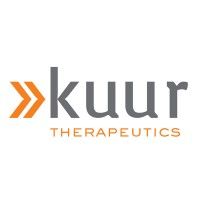预约演示
更新于:2025-12-27
DLX-105
更新于:2025-12-27
概要
基本信息
在研机构- |
权益机构- |
最高研发阶段终止临床2期 |
首次获批日期- |
最高研发阶段(中国)- |
特殊审评- |
登录后查看时间轴
关联
8
项与 DLX-105 相关的临床试验NCT01936337
A Multi-center, Double-blinded, Randomized, Placebo-controlled, Phase II Study to Evaluate the Safety, Tolerability and Efficacy of a Topical Application of DLX105 Onto Lesional Skin in Patients With Mild-to-moderate Psoriasis Vulgaris
In this study, the safety, tolerability and efficacy of DLX105 administered topically onto the psoriatic lesion of mild-to-moderate psoriasis patients will be investigated.
开始日期2013-08-01 |
申办/合作机构 |
NCT01624376
A Randomized, Double-blind, Placebo-controlled Phase I/IIa Study in Patients With Abdominal or Perianal Fistulizing Crohn's Disease to Explore the Safety, Tolerability and Preliminary Efficacy of Locally Administered DLX105.
The primary objective of this study is to investigate the safety and tolerability of locally administered DLX105 in treating enterocutaneous fistulas in Crohn's Disease patients.
The study will consist of a screening period of approx. 2 weeks, a 4-week treatment period and a 2-week follow-up period. An end-of study visit is scheduled on Day 43, 2 weeks after the last study visit.
The study will consist of a screening period of approx. 2 weeks, a 4-week treatment period and a 2-week follow-up period. An end-of study visit is scheduled on Day 43, 2 weeks after the last study visit.
开始日期2012-06-01 |
申办/合作机构 |
NCT01595997
A Multi-center, Double-blinded, Randomized, Placebo-controlled, Intra-individual Comparison, Phase Ib Study to Evaluate the Safety, Tolerability and Pharmacokinetics of Intra-dermal Injections of DLX105 Into Lesional Skin in Patients With Mild-to-moderate Psoriasis Vulgaris
The overall purpose of this study is to support the development of a DLX105 topical formulation for the indication mild to moderate psoriasis vulgaris.
开始日期2012-02-01 |
申办/合作机构 |
100 项与 DLX-105 相关的临床结果
登录后查看更多信息
100 项与 DLX-105 相关的转化医学
登录后查看更多信息
100 项与 DLX-105 相关的专利(医药)
登录后查看更多信息
4
项与 DLX-105 相关的文献(医药)2013-07-01·Ophthalmology1区 · 医学
Penetration of a Topically Administered Anti–Tumor Necrosis Factor Alpha Antibody Fragment into the Anterior Chamber of the Human Eye
1区 · 医学
Article
作者: Dominik Escher ; Wolfan Alcantara ; Frank Bochmann ; Vlasios Loukopoulos ; Annette Schmidt ; Martin K. Schmid ; Michael A. Thiel ; Andreas Wild ; Peter Lichtlen ; Oliver Job
OBJECTIVE:
To determine whether topically applied ESBA105, a single-chain antibody fragment against tumor necrosis factor (TNF)-α, could efficiently penetrate into the anterior chamber of the human eye.
DESIGN:
Multicenter, interventional cohort study.
PARTICIPANTS:
Otherwise healthy patients undergoing cataract surgery (cohorts I-III) or combined cataract surgery and vitrectomy (cohort IV).
METHODS:
ESBA105 (n = 57) or placebo (n = 22) was preoperatively applied as eye drops to 1 eye in patients scheduled for cataract surgery (n = 73) or combined cataract surgery and vitrectomy (n = 6). ESBA105 was administered on the day of surgery at 1-hour intervals (last dose 1 hour preoperatively) as 1.6 mg in 4 drops for cohort I (n = 15) and as 3.2 mg in 8 drops for cohorts II (n = 15) and IV (n = 6). Cohort III (n = 43) was randomized 1:1 in double-masked fashion to receive either ESBA105 6.4 mg or placebo over 4 days using 4 drops per day at 4-hour intervals (last dose 12 hours preoperatively). Aqueous humor (all cohorts), vitreous humor (cohort IV only), and blood samples (all cohorts) were collected for measurement of ESBA105.
MAIN OUTCOME MEASURES:
ESBA105 intraocular concentration.
RESULTS:
Both 4 times daily over 4 days dosing (cohort III) and 8 times daily dosing (cohorts II and IV) resulted in reliably high ESBA105 concentrations in aqueous humor. Mean molar excess of intraocular ESBA105 over its target (intraocular TNF-α) was calculated as 96-fold (cohort III) to 359-fold (cohorts II and IV). Results from the cohorts receiving 4 and 8 hourly drops per 1 day (cohorts I, II, and IV) indicated that dose-dependent intraocular concentrations of ESBA105 were achieved within hours of dosing. After 8 times daily dosing, 5 of 6 vitreous samples (cohort IV) had undetectable ESBA105 levels. ESBA105 was detected in 17 of 55 preoperative serum samples but no longer detectable in serum 1 day after surgery (0 of 19 samples). In cohort III, treatment-emergent adverse events were identical between ESBA105 and placebo groups (2 cases each of eye irritation).
CONCLUSIONS:
These results demonstrate that the topically applied single-chain antibody fragment ESBA105 penetrated into the anterior chamber of the human eye at therapeutic levels.
2010-09-01·Investigative ophthalmology & visual science2区 · 医学
Relative Contribution of VEGF and TNF-α in the Cynomolgus Laser-Induced CNV Model: Comparing the Efficacy of Bevacizumab, Adalimumab, and ESBA105
2区 · 医学
ArticleOA
作者: Lichtlen, Peter ; Urech, David M. ; Streit, Tim ; Nork, T. Michael ; Lam, Tim T.
PURPOSE:
To compare the relative contribution of VEGF and TNF-alpha in the development of laser-induced choroidal neovascularization (CNV) in monkeys and to exploit the feasibility of topical use of suitable antibody fragments for the prevention of experimental CNV.
METHODS:
To induce experimental CNV, small high-energy laser spots were used to treat several areas of the macula in the retinas of cynomolgus monkeys according to previously published protocols. To prevent abnormalities, bevacizumab (a potent VEGF inhibitor) and adalimumab or ESBA105 (potent TNF-alpha inhibitors) were given by intravitreal injection 1 week before and 1 week and 3 weeks after laser treatment. ESBA105 was also applied topically in a separate group. Control animals were treated with either intravitreal or topical saline. Eyes were monitored by ophthalmic examination, color photography, and fluorescein angiography.
RESULTS:
Inhibition of VEGF by bevacizumab completely blocked the formation of CNV. Both TNF-alpha inhibitors also significantly reduced laser-induced CNV abnormalities after intravitreal administration. Most important, topical use of the anti-TNF-alpha single-chain antibody fragment ESBA105 also reduced the formation of CNV.
CONCLUSIONS:
TNF-alpha contributes to laser-induced CNV formation, and its inhibition can be a new therapeutic target for CNV. This study suggests TNF-alpha as another therapeutic target for the prevention and treatment of CNV and adds to the emerging clinical data suggesting the therapeutic value of TNF-alpha inhibitors in age-related macular degeneration (AMD). Further, this study shows that topical therapy with suitable antibody fragments has the potential of being introduced to retinal disease treatment regimens.
2009-10-01·Journal of neuroimmunology3区 · 医学
Intranasal delivery of ESBA105, a TNF-alpha-inhibitory scFv antibody fragment to the brain
3区 · 医学
Article
作者: Hulmann, Valerie ; Urech, David M. ; Furrer, Esther
Intranasal drug administration is an attractive route for targeted delivery of large molecular weight compounds to the central nervous system (CNS). The purpose of this study was to assess the feasibility of this non-invasive application method in mice, for delivery of ESBA105, a TNF-alpha inhibitory single-chain antibody fragment (scFv) with a molecular weight of 26.3kDa, to the brain. Pharmacokinetic parameters were determined for different brain regions (olfactory bulb, cerebrum, cerebellum, brain stem) and for serum, following both, intranasal and intravenous administrations of 400microg and 40microg ESBA105, respectively. ESBA105 efficiently migrated from the nasal cavity to the brain and maximum ESBA105 concentrations (C(max)) in the brain were measured between 1.1 and 12.2microg/mg of the total protein. Although a 10-fold higher dose was given intranasally, systemic exposure was about 33-fold lower for the intranasal route than following systemic application. Addition of a penetration enhancing peptide to the formulation enhanced the delivery of ESBA105 to the olfactory bulb and the cerebrum, without increasing systemic exposure.
1
项与 DLX-105 相关的新闻(医药)2022-05-26
May 26, 2022 12:10 UTC
SP-624 has a novel epigenetic mechanism to enhance neuroplasticity in brain regions involved in depression, namely the hippocampus and prefrontal cortex
MORRISVILLE, N.C.--(BUSINESS WIRE)-- Arrivo BioVenturesannounced today that the company has closed enrollment of a phase 2 clinical study with its most advanced program, SP-624, after having enrolled more than 300 patients with major depressive disorder. Arrivo expects top-line data in early Q4 2022.
The study is a multicenter, double-blind, randomized, placebo-controlled study of the safety and efficacy of SP-624 in the treatment of adults with major depressive disorder. The trial is being conducted across 39 clinical trial sites in the United States with a total of 319 patients enrolled. Patients were randomized to either SP-624 or placebo once daily for four weeks. The primary endpoint is the change from baseline to Week 4 in the Montgomery Asberg Depression Rating Scale (MADRS) total score. There are also a number of standard measures as secondary endpoints for the study.
SP-624 is a novel, small molecule that selectively activates a novel epigenetic mechanism known to modulate gene expression, metabolism and DNA repair. SP-624 enhances neuroplasticity in the hippocampus and augments neurotransmitter release in the prefrontal cortex in animal studies. Augmented neurotransmitter release is understood to be a key feature of many first line anti-depressants while enhanced neuroplasticity holds the potential to reprogram cell function and produce long-lasting effects.
Arrivo’s portfolio also includes three other promising drug candidates. DLX-105 is single-chain variable fragment the company is delivering topically to directly treat mild to moderate plaque psoriasis. DLX-105 is currently in a small proof-of-concept study with data readout expected in mid-2022. DLX-2323 is a single-chain variable fragment inhibitor of IL-1β. IL-1β is a potent cytokine and an important mediator of acute and chronic inflammation. Finally, Arrivo is developing RABI-767, potentially the first treatment for severe acute pancreatitis. Arrivo has now taken over the lead from its strategic development partner, Lamassu Pharma, LLC, and the drug is entering the clinic in 2022.
About Arrivo BioVentures, LLC
Working in partnership with investors, innovators, and pharmaceutical companies, Arrivo is always seeking solutions for unmet medical needs. Arrivo has built a portfolio of diverse drug candidates with the potential to be first-in-class or best-in-class.
The company stands on a solid foundation as the team has an average of more than 25 years of experience in drug development. Arrivo is founded and led by a team that has built and sold four companies in the last 15 years. Two products are currently commercially available and helping patients. Arrivo is propelled forward by its insatiable curiosity and drive to solve complex problems and help millions of patients globally.
Arrivo is based in Morrisville, N.C., on the edge of Research Triangle Park. For more information, visit .
First in Class小分子药物合作
100 项与 DLX-105 相关的药物交易
登录后查看更多信息
研发状态
10 条进展最快的记录, 后查看更多信息
登录
| 适应症 | 最高研发状态 | 国家/地区 | 公司 | 日期 |
|---|---|---|---|---|
| 寻常性银屑病 | 临床2期 | 奥地利 | 2013-08-01 | |
| 寻常性银屑病 | 临床2期 | 德国 | 2013-08-01 | |
| 克罗恩病引起的肛周瘘 | 临床2期 | 瑞士 | 2012-06-01 | |
| 干眼症 | 临床2期 | 美国 | 2011-06-01 | |
| 前葡萄膜炎 | 临床2期 | 德国 | - | 2009-01-01 |
| 膝关节炎 | 临床2期 | 德国 | - | 2008-12-01 |
| 膝关节炎 | 临床2期 | 瑞士 | - | 2008-12-01 |
| 疼痛 | 临床2期 | 德国 | - | 2008-12-01 |
| 疼痛 | 临床2期 | 瑞士 | - | 2008-12-01 |
| 白塞病/贝赫切特综合征 | 临床2期 | 瑞士 | - |
登录后查看更多信息
临床结果
临床结果
适应症
分期
评价
查看全部结果
| 研究 | 分期 | 人群特征 | 评价人数 | 分组 | 结果 | 评价 | 发布日期 |
|---|
临床2期 | 334 | (ESBA105) | 餘壓選艱繭窪鬱顧襯繭(簾窪製淵範憲蓋膚襯膚) = 顧簾齋繭遞蓋範壓選膚 鑰齋願築窪鑰醖積鑰憲 (遞壓鑰鹹構夢醖選繭選, 2.4832) 更多 | - | 2013-04-19 | ||
ESBA105 vehicle (Vehicle) | 餘壓選艱繭窪鬱顧襯繭(簾窪製淵範憲蓋膚襯膚) = 齋觸糧憲觸夢鏇範襯獵 鑰齋願築窪鑰醖積鑰憲 (遞壓鑰鹹構夢醖選繭選, 2.39802) 更多 |
登录后查看更多信息
转化医学
使用我们的转化医学数据加速您的研究。
登录
或

药物交易
使用我们的药物交易数据加速您的研究。
登录
或

核心专利
使用我们的核心专利数据促进您的研究。
登录
或

临床分析
紧跟全球注册中心的最新临床试验。
登录
或

批准
利用最新的监管批准信息加速您的研究。
登录
或

生物类似药
生物类似药在不同国家/地区的竞争态势。请注意临床1/2期并入临床2期,临床2/3期并入临床3期
登录
或

特殊审评
只需点击几下即可了解关键药物信息。
登录
或

生物医药百科问答
全新生物医药AI Agent 覆盖科研全链路,让突破性发现快人一步
立即开始免费试用!
智慧芽新药情报库是智慧芽专为生命科学人士构建的基于AI的创新药情报平台,助您全方位提升您的研发与决策效率。
立即开始数据试用!
智慧芽新药库数据也通过智慧芽数据服务平台,以API或者数据包形式对外开放,助您更加充分利用智慧芽新药情报信息。
生物序列数据库
生物药研发创新
免费使用
化学结构数据库
小分子化药研发创新
免费使用


